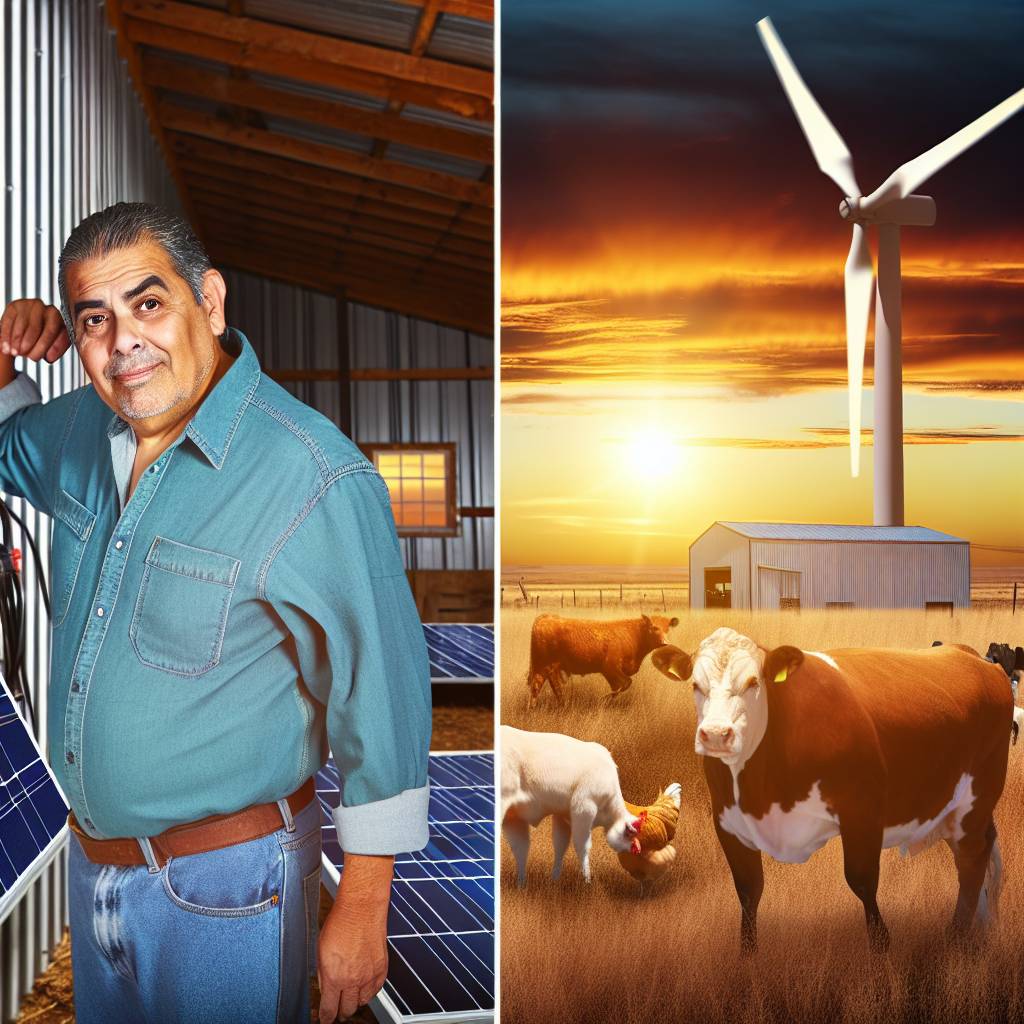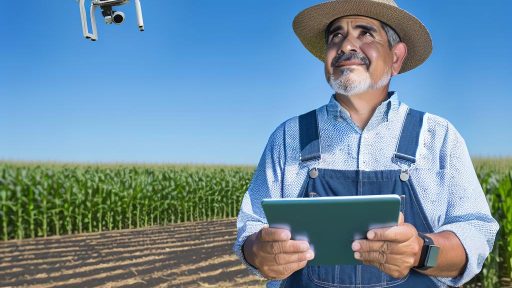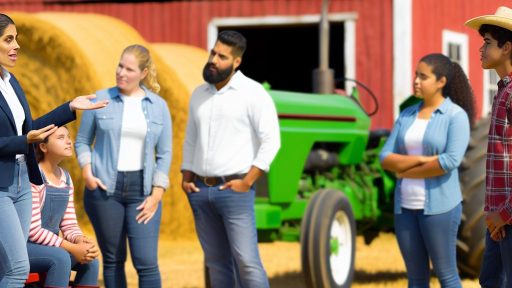Introduction to Renewable Energy in Livestock Farming
Renewable energy is becoming crucial in livestock farming.
This shift helps reduce dependence on fossil fuels.
Farmers are increasingly adopting sustainable practices.
Renewable technologies enhance productivity and reduce costs.
Benefits of Renewable Energy
Cost savings are significant with renewable energy sources.
These technologies lower operational expenses over time.
Additionally, they create a positive environmental impact.
Reducing greenhouse gas emissions is vital for sustainability.
Types of Renewable Energy Technologies
Several types of renewable energy technologies support livestock farming.
- Solar energy is one of the most popular options.
- Wind energy can effectively power farm operations.
- Biogas production from manure is another efficient method.
- Geothermal energy provides heating solutions for livestock buildings.
Implementing Renewable Energy Solutions
Implementing renewable energy systems requires careful planning.
Farmers should assess their specific energy needs first.
Collaboration with energy experts can guide the installation process.
Before purchasing, evaluating different technologies is essential.
Case Studies of Successful Transition
Many farmers have successfully transitioned to renewable energy.
The Johnson Family Farm reduced energy costs by 30% through solar panels.
Transform Your Agribusiness
Unlock your farm's potential with expert advice tailored to your needs. Get actionable steps that drive real results.
Get StartedGreen Meadows Farm generates biogas from waste, powering their operations.
These examples showcase the potential benefits of renewable technologies.
Types of Renewable Energy Technologies Applicable to Livestock Farming
Solar Energy
Solar energy harnesses sunlight using photovoltaic panels or solar thermal systems.
This technology powers farm operations and provides heating for livestock buildings.
Farmers can install solar panels on rooftops or utilize land for solar farms.
Additionally, solar energy reduces reliance on fossil fuels, lowering energy costs.
Wind Energy
Wind energy captures kinetic energy from wind through turbines.
This technology is suitable for farms located in open and windy areas.
Farmers can generate electricity for their operations and even sell surplus energy.
Moreover, wind energy contributes to sustainability by reducing greenhouse gas emissions.
Biogas Production
Biogas production converts organic waste into renewable energy.
This process involves anaerobic digestion of livestock manure and crop residues.
Farmers can use biogas for heating, electricity, and even vehicle fuel.
This technology highlights waste management while providing a sustainable energy source.
Geothermal Energy
Geothermal energy utilizes heat from the Earth’s core for farming applications.
This technology can provide heating for livestock housing and water systems.
It offers consistent energy regardless of weather conditions.
Furthermore, geothermal systems require minimal land use compared to other technologies.
Hydropower
Hydropower generates energy by harnessing the flow of water, typically from rivers.
Farmers with access to flowing water can install small-scale turbines.
This technology effectively generates electricity while promoting sustainability.
Additionally, hydropower can also aid in water management on farms.
Hybrid Systems
Hybrid systems combine different renewable energy technologies for optimal efficiency.
For instance, solar panels may work alongside wind turbines for greater energy generation.
Showcase Your Farming Business
Publish your professional farming services profile on our blog for a one-time fee of $200 and reach a dedicated audience of farmers and agribusiness owners.
Publish Your ProfileThese systems can provide a more reliable energy supply for farm operations.
Furthermore, they enhance resilience against fluctuating energy prices.
Solar Power Solutions for Livestock Operations
Introduction to Solar Power in Farming
Solar power offers a sustainable energy source for livestock operations.
Many farmers are adopting solar technology to lower energy costs.
This transition enhances both productivity and environmental stewardship.
Types of Solar Solutions Available
Farmers can choose from different types of solar solutions.
Rooftop solar panels are common for livestock barns.
Ground-mounted solar arrays are ideal for larger farms.
Solar water pumps provide efficient irrigation solutions.
Benefits of Implementing Solar Technology
Implementing solar technology reduces overall operational costs.
Farmers can significantly decrease their reliance on conventional energy sources.
Moreover, solar energy fosters sustainability and reduces carbon footprints.
Access to renewable energy can improve farm resilience to price fluctuations.
Case Studies of Successful Solar Implementations
Numerous farms have successfully adopted solar solutions.
Green Valley Farms reduced their energy bills by over 50%.
Lakeside Ranch reported improved water access through solar pumps.
These case studies demonstrate the effectiveness of solar technology.
Financing and Incentives for Solar Projects
Financial incentives are available for farmers looking to install solar solutions.
Government programs often offer grants and tax credits for renewable energy projects.
Financing options include loans specifically for solar installations.
Farmers can also explore community solar programs as a shared resource.
Future Trends in Solar Energy for Livestock Farming
Advanced solar technologies continue to emerge in the market.
Innovations, such as solar trackers, optimize energy capture.
Additionally, energy storage solutions enhance reliability and efficiency.
The future of solar energy in livestock farming looks promising.
Learn More: Streamlining Farm Finances With Advanced Agri-Fintech Solutions
Wind Energy Potential in Pastoral Farming
Understanding Wind Energy
Wind energy harnesses the power of moving air to generate electricity.
This renewable resource provides a clean alternative to fossil fuels.
Wind turbines convert kinetic energy from wind into electrical energy.
Various factors influence the efficiency of wind energy systems.
Benefits of Wind Energy in Livestock Farming
Wind energy reduces operating costs for livestock farms.
Farmers can decrease dependence on non-renewable energy sources.
Moreover, it promotes environmental sustainability.
Renewable energy usage improves farm productivity and resilience.
Installation Considerations for Wind Turbines
Site selection remains crucial for wind turbine efficiency.
Farmers should analyze wind patterns and average speeds.
Adequate spacing between turbines can enhance energy output.
It is also essential to consider local regulations and permits.
Case Studies in Pastoral Farming
Many farms successfully integrate wind energy systems.
For example, Green Pastures Farm in Nebraska utilizes wind turbines.
Showcase Your Farming Business
Publish your professional farming services profile on our blog for a one-time fee of $200 and reach a dedicated audience of farmers and agribusiness owners.
Publish Your ProfileThey significantly cut energy costs while boosting crop yields.
Another example is Blue Sky Meadows in Texas.
This farm leverages wind energy to power heating systems for livestock.
Future Outlook for Wind Energy in Agriculture
Technological advancements improve wind turbine efficiency continuously.
Innovation sets the stage for broader adoption in farming practices.
More farmers recognize the value of renewable energy sources.
As awareness grows, wind energy’s role in pastoral farming will expand.
Delve into the Subject: Drones In Agriculture: Improving Harvest Accuracy
Biogas Production from Animal Waste
Introduction to Biogas
Biogas is a renewable energy source derived from organic materials.
Animal waste serves as a primary feedstock for biogas production.
This process occurs through anaerobic digestion, where microorganisms break down organic matter.
Benefits of Biogas Production
Biogas production offers numerous environmental benefits.
It reduces greenhouse gas emissions by preventing methane release into the atmosphere.
Additionally, it helps manage animal waste effectively, reducing odors and pathogens.
Biogas can be used to generate electricity, heat, or fuel for vehicles.
Overall, this process supports sustainable livestock farming practices.
Steps in Biogas Production
- Collection of animal waste from farming operations.
- Transporting waste to a biogas digester.
- Inputting the waste into anaerobic digesters.
- Allowing microorganisms to break down the waste over time.
- Collecting the produced biogas for energy use.
Types of Digestion Systems
Different types of anaerobic digestion systems exist for biogas production.
Continuous digesters provide a steady flow of substrates into the system.
Batch digesters process waste in separate batches, allowing for more control.
Each type has its advantages and best-use scenarios in livestock farming.
Challenges in Implementation
While biogas production is beneficial, challenges remain.
Initial setup costs for biodigesters can be significant for farmers.
Moreover, ongoing maintenance requires technical knowledge.
Additionally, variations in waste composition can affect biogas yield.
Case Studies
Farmers worldwide have successfully implemented biogas systems.
In Denmark, many farms use biogas to power their operations.
This practice not only provides energy but also creates fertilizer from the digestate.
In the United States, farms are installing digesters to reduce waste disposal costs.
Future of Biogas in Livestock Farming
The future of biogas production looks promising in livestock farming.
Advancements in technology will increase efficiency and reduce costs.
Additionally, government incentives may foster more adoption among farmers.
As awareness grows, more producers will realize its potential benefits.
You Might Also Like: Smart Irrigation Systems Powered By AI
Utilizing Geothermal Energy for Heating and Cooling in Farms
Introduction to Geothermal Energy
Geothermal energy is a sustainable energy source derived from the earth’s heat.
This energy can effectively assist livestock farmers in maintaining optimal temperatures.
Moreover, it provides a reliable and efficient method for heating and cooling facilities.
Benefits of Geothermal Energy
Geothermal energy reduces reliance on fossil fuels in farming operations.
This shift leads to lower greenhouse gas emissions and a smaller carbon footprint.
Additionally, geothermal systems often result in significant cost savings over time.
They require less maintenance compared to traditional heating and cooling systems.
Showcase Your Farming Business
Publish your professional farming services profile on our blog for a one-time fee of $200 and reach a dedicated audience of farmers and agribusiness owners.
Publish Your ProfileHeating Applications for Livestock
Geothermal energy can provide consistent heating for livestock barns.
It ensures animals remain comfortable during cold weather conditions.
This comfort contributes to better health and productivity among livestock.
Heating Systems
Farmers can install various heating systems using geothermal energy.
- Radiant floor heating systems distribute heat evenly throughout the barn.
- Hot water heating systems can warm individual stalls for added comfort.
- Air handling units can provide efficient heating solutions as well.
Cooling Applications for Livestock
Geothermal energy is equally effective for cooling barns in hot climates.
Proper cooling maintains livestock productivity during peak summer heat.
Also, it helps reduce heat stress among animals, promoting overall health.
Cooling Systems
Geothermal cooling relies on ground-source heat pump systems.
- These systems use the earth’s cool temperatures to cool the air inside barns.
- They can maintain favorable conditions for livestock and their environment.
- Furthermore, these systems can be integrated with ventilation systems for added efficiency.
Implementation Considerations
When considering geothermal energy, farmers should evaluate site conditions first.
Soil types and geological formations play critical roles in system performance.
Furthermore, farmers must assess the potential return on investment for geothermal installations.
System Installation
Working with experienced geothermal contractors ensures proper installation.
They can tailor systems specific to the needs of each farm.
Additionally, they can assist in obtaining any necessary permits and approvals.
Success Stories in Agricultural Geothermal Use
Numerous farms have successfully integrated geothermal energy into their operations.
For instance, Maple Hill Farm saw a 50% reduction in energy costs.
Similarly, Sunny Acres Ranch improved livestock health and productivity.
Gathering Information
Farmers should engage with local agricultural extension services for guidance.
They can provide resources and support for transitioning to geothermal energy.
Learn More: Blockchain Innovations Driving Efficiency In Farming Supply Chains

Implementation Challenges of Renewable Energy Technologies in Livestock Farming
Financial Barriers
Investing in renewable energy technologies can be costly for farmers.
Initial setup costs often discourage many livestock producers.
Access to financing options remains limited in rural areas.
Moreover, fluctuating energy prices impact return on investment.
Technological Limitations
Many renewable energy technologies require advanced knowledge to implement.
This technical complexity can deter some livestock producers.
Additionally, not all farms have the space for large installations.
Equipment maintenance and reliability also pose significant challenges.
Regulatory Hurdles
Navigating through regulations can be overwhelming for farmers.
Compliance with local and federal permits can delay projects.
There may also be restrictions on the types of energy sources used.
Understanding these regulations requires time and resources.
Cultural Resistance
Cultural perceptions of renewable energy can hinder adoption.
Some farmers prefer traditional energy sources due to familiarity.
Overcoming skepticism about new technologies is essential.
Education and outreach efforts can help change these perceptions.
Infrastructure Challenges
Many rural areas lack the necessary infrastructure for renewable energy.
Grid connectivity issues can limit energy export opportunities.
Additionally, existing infrastructure may require upgrades to accommodate new technologies.
Collaboration with local utilities can address these infrastructure needs.
Showcase Your Farming Business
Publish your professional farming services profile on our blog for a one-time fee of $200 and reach a dedicated audience of farmers and agribusiness owners.
Publish Your ProfileEconomic Benefits of Adopting Renewable Energy in Livestock Farming
Cost Savings on Energy Bills
Renewable energy technologies help farmers reduce their energy costs significantly.
Solar panels and wind turbines generate electricity at lower rates than traditional sources.
By harnessing these technologies, farmers can stabilize their energy expenses over time.
Furthermore, they can eliminate fluctuations associated with fossil fuel prices.
Incentives and Financial Support
Various government programs offer financial incentives for renewable energy adoption.
These incentives can lessen the initial investment burden for farmers.
Grants and tax credits specifically encourage the installation of renewables.
Additionally, state and local programs often provide assistance for these projects.
Increased Property Value
Incorporating renewable energy systems can enhance property values for livestock farms.
Potential buyers often favor properties with energy-efficient installations.
This preference stems from the associated long-term savings on operational costs.
As a result, farmers can expect higher resale values for their properties.
Enhanced Sustainability and Market Appeal
Renewable energy use positions farms as environmentally responsible enterprises.
This approach helps attract customers who prioritize sustainable practices.
Moreover, these practices can open up access to new markets focused on sustainability.
Consequently, adopting renewables also enhances brand reputation within the market.
Resilience Against Price Volatility
Relying on renewable energy reduces exposure to fluctuating energy prices.
This consistency allows farmers to plan their budgets more effectively.
Moreover, they achieve a degree of energy independence from external suppliers.
As a result, this enhances overall operational resilience and stability.
Long-Term Investment and Returns
Investing in renewable energy presents long-term financial benefits for farmers.
Despite initial setup costs, most renewable technologies pay off over time.
Energy savings bolster farm profits and facilitate reinvestment into operations.
Therefore, this transition supports the financial sustainability of livestock farms.
Case Studies: Successful Integration of Renewable Energy in Livestock Farms
Solar Power in Dairy Farming
Many dairy farms are increasingly adopting solar panels.
This integration helps reduce energy costs significantly.
For example, Maple Ridge Dairy installed a solar array last year.
They now generate about 80% of their energy needs.
This sustainable approach has reduced their electricity expenses substantially.
Wind Energy for Poultry Production
Wind turbines are another excellent choice for livestock farms.
Sunny Side Farms operates wind turbines to power their facilities.
These turbines provide clean energy and lower operational costs.
As a result, Sunny Side has reported improved profit margins.
Moreover, wind energy significantly decreases their carbon footprint.
Biogas Systems in Swine Production
Biogas production is a valuable renewable energy source for swine farms.
Green Acres Farm implemented a biogas digestor system successfully.
This system transforms manure into usable energy.
Consequently, they have increased energy independence and sustainability.
Additionally, this practice reduces waste and environmental impact.
Integrated Systems for Sheep Farming
Integrated renewable energy systems show promise in sheep farming.
Showcase Your Farming Business
Publish your professional farming services profile on our blog for a one-time fee of $200 and reach a dedicated audience of farmers and agribusiness owners.
Publish Your ProfileMeadowbrook Farm utilizes a combination of solar and wind energy.
This hybrid approach maximizes energy efficiency and sustainability.
Farm managers report enhanced productivity and stable energy supply.
Furthermore, the reduction in energy costs boosts overall profitability.
Innovative Funding Models
Many farms benefit from innovative financing for renewable energy projects.
For instance, River Valley Cattle partnered with a local cooperative.
This partnership facilitated funding for their solar setup.
Such collaborations enhance access to clean energy resources.
Moreover, these models promote shared benefits within farming communities.
Future Trends in Renewable Energy Technologies for Livestock Farming
Emerging Renewable Technologies
Innovations in renewable technologies are transforming livestock farming.
Solar energy systems are becoming more common on farms.
Farmers increasingly use wind turbines to power operations.
Biogas production is gaining traction for waste management.
These technologies reduce reliance on fossil fuels.
Integration of Renewable Sources
Farmers are integrating multiple renewable energy sources.
Hybrid systems combine solar and wind energies effectively.
This integration enhances energy resilience and efficiency.
Farmers can maximize energy production throughout the year.
Investment in Infrastructure
Investments in renewable infrastructure are rising steadily.
Local governments and organizations provide grants and incentives.
This support helps farmers transition to sustainable practices.
Moreover, access to innovative financing options encourages adoption.
Technological Advances in Renewable Energy
Advancements in technology are making renewable options more accessible.
Improved energy storage solutions enhance reliability.
Smart farming technologies optimize energy consumption.
Data analytics help farmers monitor energy use effectively.
Environmental Impact and Sustainability
Adopting renewable energies significantly reduces carbon footprints.
This shift contributes to overall environmental sustainability.
Farmers can demonstrate their commitment to eco-friendly practices.
Moreover, sustainable practices appeal to environmentally conscious consumers.
Collaboration and Networking Opportunities
Networking among farmers fosters collaboration on renewable projects.
Shared knowledge and resources enhance collective learning.
Collaborative efforts lead to efficient resource utilization.
Ultimately, these partnerships can drive innovation in farming.
Additional Resources
Fact Sheet | Biogas: Converting Waste to Energy | White Papers | EESI




